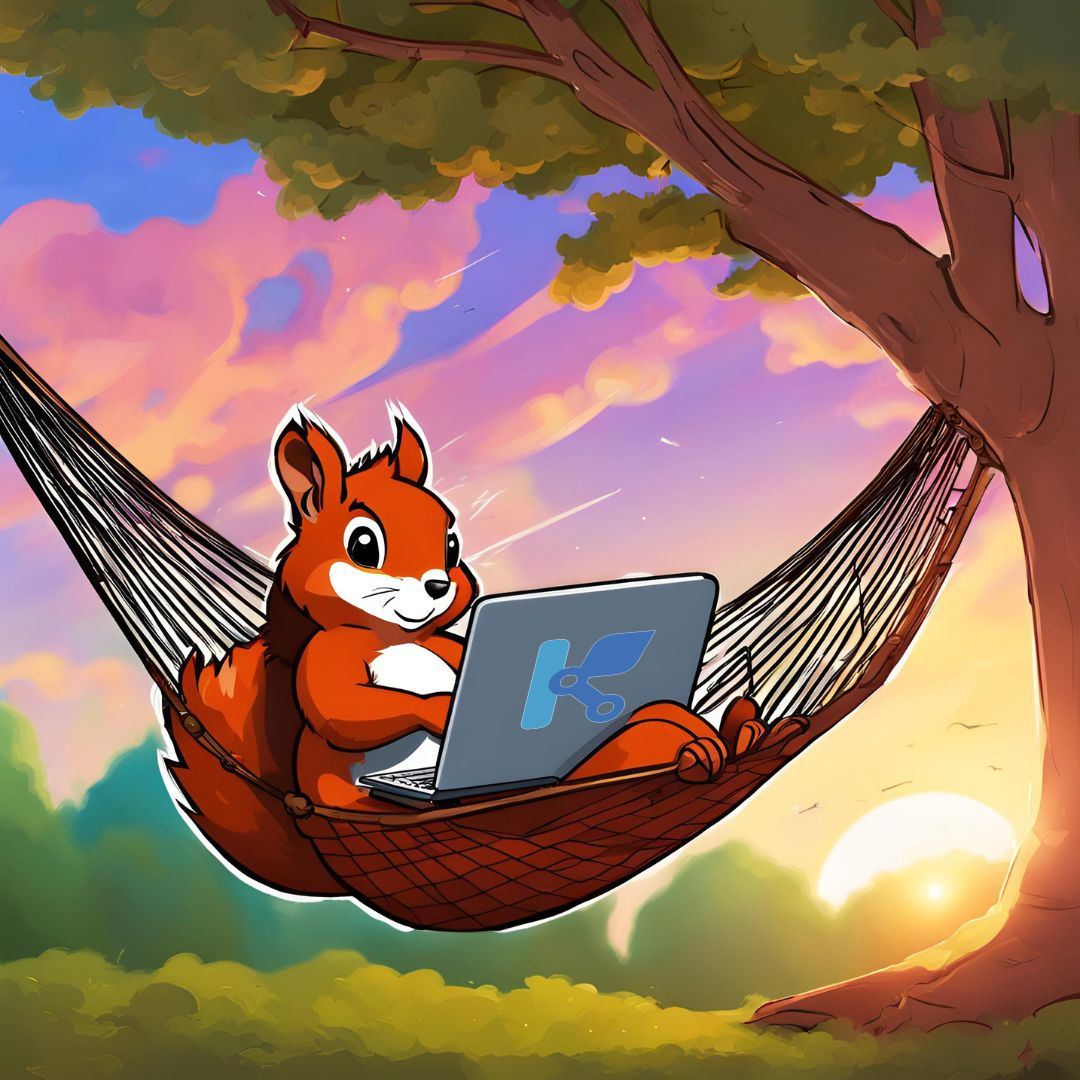I’m a regular user of Linux systems but apart from a couple of test Ubuntu installs many years ago they’ve always been containers or VMs with no DE which I can throw away when I break them. The Steam Deck showcasing how far Wine/Proton has come combined with Windows being Windows has given me the push; I’ve made a Mint live USB and it’s running beautifully on my desktop. I come to you, the masters, with questions before I hit install:
- What do you recommend I do about disk partitions? I’m keeping a Windows install for the few things that demand it, does Windows still occasionally destroy Linux partitions? Do I need separate partitions for data and OS? Is it straightforward to add additional distros as new partitions or is that asking for trouble?
- Is disk encryption straightforward? And is that likely to upset the Windows partition?
- Is cloud storage sync straightforward? It’s my off-site backup solution on Android and Windows (using Cryptomator with Dropbox, Google Drive, etc) but I don’t think that many providers have Linux clients. Is something like rclone recommended?
- Should I just use apt to install software? I know there’s some kind of graphical package manager (synaptic?), does that use apt under the covers or is it separate? Is it recommended to install something like Flathub too?
- Any other pearls of wisdom? How do I keep everything tidy? Any warnings about what not to do? Should I use a particular terminal emulator or Firefox fork?
What do you recommend I do about disk partitions?
I recommend separate EFI partitions while dual booting, I haven’t seem issues with my separate EFI partition setup yet.
If Mint provides Btrfs filesystem I personally recommend looking into timeshift (snapshot software that can be setup to automatically snapshot your computer).
Is disk encryption straightforward?
According to Linux Mint forum, you need to choose an option in “Advanced features” while going through installer, that seems straight forward

Is cloud storage sync straightforward?
Don’t have experience with this but I can tell you: While rclone supports bi-directional sync, you need some setup for make it run periodically.
Should I just use apt to install software?
In the end you have to give trust to someone, I think it’s fair to say if you already choose Mint you probably trust whatever options comes with Mint more than 3rd party options (but is it theoretically possible that backdoored program exists in Mint repository? of course yes).
Important things about dual booting:
-
Configure your Windows to use UTC time https://wiki.archlinux.org/title/System_time#UTC_in_Microsoft_Windows
-
Disable “Fast startup” in Windows (can possibly cause hardware issues if not disabled and it really doesn’t improve things in computers with SSD)
-
I’ve recently been working on this kind of migration as well (but to Fedora instead), so I can speak from my own experiences:
- Cloud storage: I’ve heard fewer issues with Google Drive and Dropbox, but I had tried syncing OneDrive and ran into some issues. I ended up purchasing a license to Insync a while back, which was a bit overkill for what I needed it to do. I’m still working on weaning myself off OneDrive entirely and instead going to self-hosted cloud sync.
- Software installs: there are a ton of different methods to do software installs on Linux these days. I think Synaptic only does apt (it’s in the name!), but a lot of apps are distributed through flatpak, AppImage, or even Snaps.
- Native packages tend to work better with your desktop environment in terms of theming but any library dependencies will get installed with them, while the others are easier to distribute and include the dependencies with them.
- Other advice:
- Play around with different distros and desktop environments until you find something you’re really comfortable in.
- Make a list of your required apps and verify which distro’s native capabilities may or may not meet your needs.
- It took me a few tries before settling on Fedora KDE spin, particularly because KDE had a feature I really wanted: per monitor wallpaper settings without having to install a separate app. I’ve found that many other KDE apps are really nice too, so I’m sticking with it. KDE also puts me in a familiar desktop environment coming from Windows as well.
- One irritation I’ve experienced: gaming-centric hardware is designed for Windows and if you have stuff designed around that, it’s going to become very obvious. Yes, there’s open source projects that help adapt them for Linux. But they are nowhere near equivalent and generally they lack maintainers to keep them going.
- I have a Stream Deck that on Windows, I used it for monitoring hardware temps. On Linux, you get app launcher buttons at best.
- My mouse is a Logitech G604 Lightspeed. Piper + libratbag does a pretty good job at trying to support it, but it’s middling at best and unfortunately looking at the repo, they’re in pretty desperate need of maintainers.
This is my own personal (and recent) experiences and I’m pretty new to using a Linux DE for a main OS too, so anything I say could be incorrect and I welcome suggestions/corrections.
Apologies for the very late reply and thanks for all the suggestions! Have you tried Solaar with your mouse? I have a different Logitech one, can’t remember the name but it works perfectly for gestures.
I did not, had no idea about it. Unfortunately the mouse started to fall apart a bit and Logitech has very few MMO mice meeting my needs, so I decided to switch to Razer Naga Pro V2. I haven’t tried configuring it on Linux yet, as I’m pretty sure the major supporting app doesn’t have V2 support yet.
I might actually contribute back based on the steps listed in the open issue for it. It just requires time, effort, and motivation I don’t have right now.
deleted by creator
Than you for such detailed response! I find it incredibly useful to pickup on extra nuggets of information even if the question was not directly applicable to me.
What’s wrong with nano?
deleted by creator
Nothing, there is nothing wrong with nano. There are what I will call vim purists who think using anything but vim is sacrilege. I’ve been using nano, and it’s predecessor Pico forever and while I can use vim if I need to, I don’t hate myself enough to do so.
I know but I just wanted to know what their take on it is.
it has a gazillion commands built in, e.g. esc,d,d to delete a line. they memorized a lot of them and think that’s how you should edit text
deleted by creator
deleted by creator
Yes yes, vim good, nano bad. And rather than have discourse on the matter I’ll call you all fascists and claim you support genocide. Definitely an adult thing to do, good job you.
Is it recommended to install something like Flathub too?
Flathub is awesome
Not recommended for security. Use your distros package manager
Flathub programs has some basic permissions management, which is a major upgrade.
You can use firejail or other sandoxes with any application packaged in any distribution.
you can, but flatpak is easier
- Just shrink windows and install Linux.
Use either BTRFS (no idea if Mint supports that) or LVM with EXT4 or F2FS. F2FS is used in Android, stable, fast, simple, flash optimized. Ext4 is also based.
Dont separate / from /home if you dont use the above setup. If you do, partitions can resize dynamically so no problems here.
Installing multiple OSses is messy, avoid it.
Windows Updates may remove GRUB and eat the partition. If the partition is still there, you could reflash GRUB with dd.
- Disk encryption is a single checkbox in every installer I tried. It doesnt use the TPM so it works everywhere, while not as fancy as Android on a Google Pixel.
Absolutely do it.
Most often you only encrypt the / partition and not the boot. And no you dont touch Windows so no issues.
-
Tons of people use GDrive and Dropbox. It supposedly works.
-
On a traditional Distro I would leave the system as it is and install everything from Flathub. It is preinstalled and configured on Linux.
Traditional Distros are extremely messy and build up Entropy, i.e. randomness. You just do random shit everywhere and after a few months or years you have issues that nobody can reproduce and you need to reinstall.
That is why I am happily on Fedora Atomic Desktops (Kinoite, KDE). OSTree is heaven.
If you stick to Flatpaks you will not change the system at all, the apps are separated. So it will likely not break at all.
Ironically, while the “immutable” (managed) systems are used with Flatpak a lot, it is the traditional ones that should use it, as they dont have mechanisms like
rpm-ostree reset.So yes, absolutely.
Have a look at my list of recommended apps (which I planned on updating today and a damn browser crash destroyed 2 hours of work…)
- Use an atomic system. Use Flatpaks. Change as little crazy stuff as possible (if you are on KDE, lol).
I recommend Librewolf, great project with good usability.
Meanwhile I will some day fix up my arkenfox automation which makes any Firefox version as secure and private.
Don’t recommend btrfs 💀 especially to newcomers
If it is the default on the distro they intend to use, then, by all means, they should definitely go with it. Btrfs has been really stable for a pretty long time anyways. Just don’t use it for RAID 5/6 and you’d be absolutely fine.
You don’t even need raid for everything to shit the bed https://rsc.vet/board/viewtopic.php?t=133
Speaking from my experience with fedora and windows 10 and 11 within the same system.
-
As others have stated here, If you can, please keep each operating system on it’s own physical disk. Disconnect others if you perform a new Windows install on any, as it’ll attempt to store its bootloader on disk 0 regardless of the OS destination drive.
-
LUKS2 is part of the fedora workstation setup, I imagine it will be presented to you upon install with Mint. If you’re on separate physical disks, you shouldn’t have much to worry about, but as far as I’m aware, you’re okay to use disk encryption on drives partitioned with two systems.
-
There’s a Dropbox .deb and .rpm for linux as far as I can tell, but I cannot attest to its quality or how well it integrates with a given file manager. Cloud accounts are generally well supported amongst the key desktop environments, for which I’d consider Cinnamon to be a part of.
-
Modern, mainstream distributions are pretty GUI friendly. I fully expect you to be able to get by on Mint without needing to touch the command line much if at all. That said, I grab CLI oriented tools from the terminal and graphical apps from the app store. Enabling flathub will give you access to a broad selection of graphical software so by all means, go for it.
-
I’m not wise so I’ll hold back here. I will say that Fedora has allowed me to approach linux as an absolute casual for nearly 6 years now.
- There’s a Dropbox .deb and .rpm for linux as far as I can tell, but I cannot attest to its quality or how well it integrates with a given file manager. Cloud accounts are generally well supported amongst the key desktop environments, for which I’d consider Cinnamon to be a part of.
In 2018 Dropbox dropped support for running/syncing on encrypted partitions, in my case ext4 on encfs. Don’t ask me why.
I don’t know if that’s still the case.
-
To make life easier for yourself, I’d highly recommend running Linux on a separate drive. The Linux distribution installers I’ve used will install the bootloader on whatever drive you choose to install on, but the windows installer will use the storage controller’s port ordering to choose which drive to install on.
Your best bet is to simply disconnect the Windows drive when installing Linux and to disconnect the Linux drive when installing Windows, then just use the BIOS boot selection screen to choose which OS to boot into.
You can add your Windows drive to Grub and you might be able to add your Linux distro to your Windows bootloader, but keeping them entirely separate is probably best.
I vaguely remember from trying this many years ago that if you install Windows first it will try and wipe everything, and if you install Linux second it will leave Windows alone, and you can then go straight to grub on every boot and choose Windows or Linux. Is that still the case?
deleted by creator









